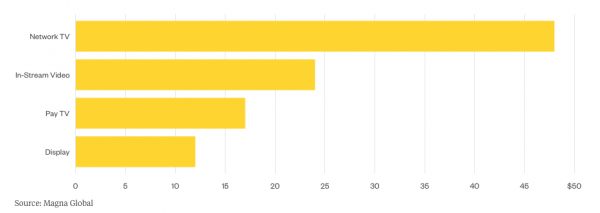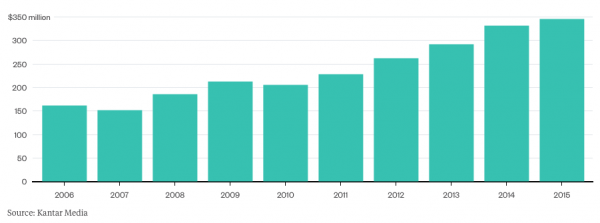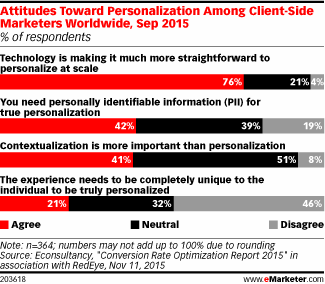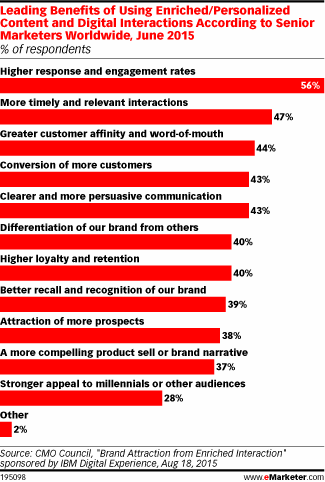Last year’s Super Bowl ad game was on fleek. Between unique promotions like Bud Light’s life-sized Pac-Man game and a number of mobile companies advertising their wares – including Supercell’s Clash of Clans – brands proved to be clutch just like Peyton Manning. While the Broncos and Panthers prepare to go head-to-head for the coveted Trophy, we’ll be tracking the advertisers chasing elusive eyeballs and dollars all the way to kick-off time.
For Super Bowl 50 in February, companies will again bring their A-game. With ads both broadcasting on TV and streaming online simultaneously, CBS expects major exposure from its audience, and they’re charging accordingly for commercials. A 30-second ad spot for the big game is going for $5 million a pop – and, according to CBS president Les Moonves, spots have almost sold out, indicating that companies aren’t shying away from reaching a record breaking audience. Last year, the game was the most watched show in U.S. TV history.
Though some companies still have yet to be revealed – and others like GoDaddy have already bowed out – we do have a rough idea of some that will be taking part in the yearly proceedings. Of course, there are some obvious ones that will make a return, like Bud Light and CBS, hawking its own programming. But here are some that might surprise you:
Outdoor Apparel
The makers of outdoor gear want to bring things back to nature for the Super Bowl, and have introduced a new teaser with a different kind of mascot to advertise its apparel – a marmot.
The video below, with more to follow before the Super Bowl, highlights how this “marshmallow-eating, fetchingly clad” animal will become the focus for a new campaign for Outdoor Apparel.
CBS
Since the channel is airing the Super Bowl, it’s expected that CBS will have plenty of ads that point to its own programming, including hit shows like Big Bang Theory and others. However, for the first time ever, people will be able to view it online, ads and all.
That means there could be a good chance we’ll see some sort of push for the company’s CBS All Access app as well, although the channel has yet to confirm its plans. It did note, however, that a special episode of The Late Show Starring Stephen Colbert would air immediately following the game.
Snapchat
Even though it won’t necessarily air an advertisement during the Super Bowl, Snapchat will still take part in the Big Game with a campaign featuring a number of advertisers, promoting their goods through the company’s app. These sponsors include Marriott, Budweiser, Pepsi and Amazon, with video ads that are more than likely set to coincide with its previously announced Super Bowl ads.
Wal-Mart
The popular retailer will make a different sort of impact with its Super Bowl advertising, catering more to female fans of the NFL with a two-ad set-up that will focus on mothers. It will also launch a social campaign that ties in with the hashtag #GameDayTraditions, with “football mom” Mama McCourty front and center, as demonstrated in the video clip below.
Apartments.com
Actor Jeff Goldblum, who will star in the upcoming Independence Day sequel, has made a hit out of his Apartments.com character, hawking the popular website as a specialist of sorts. He’ll return in a new Super Bowl ad for the company, in a 60-second ad that’s meant to bump up awareness for the site.
Buick
The new Cascada convertible will be the key focus for Buick’s elaborate Super Bowl advertising, which features a 30-second spot starring New York Giants wide receiver Odell Beckham Jr. and actress/model Emily Ratajkowski. More ads will follow later in the year, focusing on the company’s forthcoming models, the LaCrosse sedan and the Envision compact crossover. For now, though, everything’s coming up Cascada.
Amazon
Amazon has recently announced its Super Bowl plans, and they surround actor Alec Baldwin. In a campaign being dubbed “#BaldwinBowl,” the ads will focus on Baldwin (alongside former Miami Dolphins quarterback Dan Marino) as they attempt to figure out plans for a sporting event…with the help of Amazon’s own Alexa speaker.
The first teaser for the campaign is here:
Mini USA
The makers of the Mini line will have a star-studded ad ready to go for the Super Bowl, featuring no less than six celebrities showing off their favorite mini vehicles. These include tennis superstar Serena Williams, rapper T-Pain, former major league pitcher Randy Johnson, skateboarder Tony Hawk, actor Harvey Keitel and retired soccer player Abby Wambach.
“Either they’ve driven in the car in the past, own the cars currently or have some sort of relationship,” said Tom Noble, department head of Mini brand communications, about the stars’ connection with their vehicles.
To tie in with the ad, Mini will roll out a number of online videos, featuring the stars talking about how they prefer to define themselves, doing away with labels. Those videos have started posting online this morning, and can be found here.
Fiat
Chrysler’s Fiat line will once again produce an ad for the Super Bowl, though it hasn’t been determined just yet how long it will be, or what the company has in mind. Judging by previous commercials, however, fans of the automaker should be in for a treat.
Anheuser Busch
As expected, the beer titan will return with a number of new ads during the Super Bowl, including ones specifically for Bud Light, Budweiser, Shock Top and Michelob Ultra. It appears that the company has already signed on comedians Amy Schumer and Seth Rogen for an incoming set of ads for its Bud brands that will begin during the big game.
In addition, the company has a “serious” new ad that continues to rebel against craft beer manufacturers, similar in nature to an ad it ran last year.
Buick
The car manufacturer sat last year’s game out, but will return with a new 30-second spot that will focus on its new Cascada convertible.
“Super Bowl 50 represents a perfect opportunity for us to showcase our newest vehicles to a global audience of millions of consumers,” Buick said in a statement.
Toyota
The car manufacturer will return to Super Bowl advertising for the fourth year in a row, with a new 90-second spot that will focus primarily on the Prius. The company’s ads last year fared well, including a commercial featuring Paralympic snowboarder Amy Purdy.
Pokemon
With the Pokemon franchise celebrating its 20th anniversary this year, The Pokemon Company has opted to set up a Super Bowl 50 ad to celebrate it.
It is meant to encourage fans to “Train On,” referring to the consistent battles that thePokemon games are known for. it recently made its online debut, and can be found below.
It’s going to be a big year for the franchise, between special Nintendo 3DS systems being released in February, three classic Pokemon games coming to digital download for 3DS handhelds, and Pokken Tournament, a new fighting game, launching for the Wii U this spring.
SunTrust Bank
Atlanta’s based bank chain will soon be ready to tackle the Super Bowl, as it has announced its intention to air a 30 second ad during the big game.
Instead of going with a fancy approach, the ad will stick with the basics, focusing on consumer encouragement and financial confidence. “We believe that financial stress is a significant social concern, one that merits national attention,” bank Chairman/CEO William H. Rogers Jr. said in a written statement. “We’re investing in this ad because the Super Bowl is a unique and proven forum to launch a national conversation. We want to be the spark that motivates people to take action, and give them tools and access to information to move closer to financial confidence.”
Taco Bell
The popular restaurant chain will return to the Super Bowl with another 30-second spot, although it withheld details on what viewers can expect from it. However, it’s been promising its “biggest launch to date” with a number of recent events, so it could easily tie in with it.
“We aren’t revealing details of our spot until the big game, but we will have ways for our fans to engage with us in the weeks leading up to Super Bowl 50,” said Chris Brandt, chief concept and brand officer for Taco Bell. “This build up will pay off with one of the most exciting announcements from the Taco Bell brand to date.”
BMW
It’s been a few years since we’ve seen BMW’s Mini brand make an appearance in the Super Bowl, but it’ll come roaring back this year with a new 30-second ad during the third quarter.
The ad will feature various models from the Mini line-up, including the new Clubman wagon, and while no other details have been revealed, it should be just as innovative as the piece featuring Katie Couric and Bryant Gumble.
Doritos
Once again, the chip brand from Frito-Lay looks to “Crash the Super Bowl” with a trio of consumer-generated ads that have made the finals, and the winner will air during the game.
These ads have been a hit in the past, ranging from a man trying to save a seat on an airline with all kinds of excuses (only to settle for a beautiful woman – and her child) to a kid that actually turns his pet pig into a flying rocket.
The three finalists were selected from a pool of over 4,500 submissions across over 25 different countries, and fans will be able to flock to Doritos.com to vote for their favorite before the Super Bowl. The three finalists are below:
TurboTax
TurboTax is no stranger to Super Bowl advertising, and it’s going all out with this year’s game, with seven new 30-second spots airing during the big game.
The focus on the campaign will be “It doesn’t take a genius to do your taxes,” reminding consumers that using TurboTax software is less of a burden when it comes to adding up numbers and submitting forms.
“This year’s campaign is the next step in our multi-year journey to reposition the TurboTax brand and to build meaningful, emotional connections with consumers,” Greg Johnson, senior VP-marketing for Intuit’s Consumer Tax Group, said in a statement.
An example of what TurboTax has in mind with the campaign, featuring professor of theoretical physics Michio Kaku, can be found below.
Colgate
Instead of relying on a savvy campaign or a superstar to promote its product, will instead have a simple message: “save water.”
The 30 second spot will discuss how millions of gallons of water are wasted every year from people leaving water running while they brush their teeth. It’s a remake of a 60-second ad that originally aired in Latin America last year (see below), one that points out how four gallons of water are wasted daily amongst Americans. It’ll tie in with an #EveryDropCounts social campaign that’s set to kick off during the popular event.
Adidas
Even though Adidas’ specific Super Bowl plans haven’t been revealed yet, it’s picked up a major star to headline a football-related series that ties in with the big event. Turf’d Up – featuring rapper Snoop Dogg – discusses the sport with many guests, including ex-NFL players, celebrities and other sports personalities. The episodes will be available on Snoop’s WestFestTV YouTube channel.
“We have a long-standing relationship with Coach Snoop, which includes everything from working with him to design signature footwear, apparel and uniforms, to the sponsoring the SYFL – his grassroots football program,” said Mark Daniels, vice president of team sports for Adidas. “Turf’d Up is the natural extension of our partnership and provides the perfect platform to showcase Coach Snoop’s talent, his knowledge of the game and how Adidas Football is the only brand that fuses sports and culture.”
Honda
The vehicle company confirmed that it will have a Super Bowl spot to highlight its new Ridgeline pickup, a car that made its debut at the North American International Auto Show this year. The 60-second spot will highlight the performance of the vehicle, as part of a multiplatform campaign leading up to its availability. “Super Bowl 50 is the right time and the right venue to communicate Honda’s continued leadership in light trucks,” said Jeff Conrad, senior vice president and general manager for Honda’s motor division. “The multiplatform approach will enable Ridgeline to come out of the gate strong in 2016.”
LG
LG has just unveiled what its Super Bowl ad will focus on — a Man From the Future.
Liam Neeson, who appeared in last year’s well-received ad for Clash of Clans during the big game, will return as part of the company’s new #ManFromtheFuture campaign, which will tie in with its new television models. The teaser ad for this campaign is below.
Paypal
Each year, “rookie” advertisers try their luck on a Super Bowl ad, like uCool with its mobile game Heroes Charge. For this go-around, Paypal, the online currency handling company, will try its hand with a Super Bowl ad, though it hasn’t divulged details on what fans can expect from its commercial. Other first-timers are likely to join the advertising game as well for the game, but Paypal is easily the most noteworthy thus far.
Butterfinger
The popular candy bar is no stranger to great advertising, and for this year’s Super Bowl, it’s already begun hyping its #BolderThanBold campaign. With it, the company will host a special event that will be broadcast on Periscope live during the game, featuring professional sky-diver Carson Schram. It should no doubt have great reception, just like 2014’s Butterfinger Cups ad did.
Wix and Dreamworks
Last year, Wix.com scored a big win with its Super Bowl ad, featuring Brett Favre and other former NFL superstars trying their hand at new business ventures. For this year’s Super Bowl, however, the site-building company has teamed up with Dreamworks to help promote the forthcoming animated film Kung Fu Panda 3. The ad will feature characters Po and Mei Mei attempting to use Wix’s software platform to create websites. This promotion looks like a win-win for both companies, as Wix gains more superstar exposure, and Dreamworks hypes Kung Fu for its release right before the game, on January 29th. The trailer is below.
In addition, Wix has just released a teaser trailer for the potential Super Bowl ad, which can be seen below.
Weathertech
The car floor mat marketer has had two Super Bowl commercials with a “made in America” theme. It’ll be returning for a third go-around, with a 30-second spot that’s likely to follow a similar set-up.
Squarespace
Squarespace made an impactful debut on the Super Bowl advertising front in 2014, before continuing on with a much more subtle ad for 2015 featuring Jeff Bridges and his custom-made DreamingwithJeff.com website. We’re unsure what the company has planned for next year, but here’s hoping for a return of Jeff, man.
Snickers
Yes, the popular candy bar will be back for another go-around in the Super Bowl, but it’s going to take a lot to top last year’s, in which Danny “Machete” Trejo and Steve Buscemi appeared in a classic episode of The Brady Bunch.
Skittles
Considering that Mars is an official NFL sponsor, we should see another Skittles ad come around in time for the Super Bowl. Last year, the company scored big with its “Settle It” ad, featuring a number of strong-armed folks battling for supremacy via arm wrestling. This year, the company will turn to Aerosmith front man Steven Tyler, who posed the teaser image below from the forthcoming “Taste the Rainbow” campaign.
via GIPHY
Mountain Dew Kickstart (PepsiCo)
Considering that Pepsi is the sponsor of the Super Bowl halftime show featuring the band Coldplay this year, it shouldn’t be surprising to see at least a couple of superstar ads. The soda company announced its first Super Bowl Spot since 2000 will be for its line of Mountain Dew Kickstart beverages, which combine Mountain Dew with fruit juice a “kick” of caffeine. Not much else is revealed about the ad, other than it will be “a hilarious TV ad that combines fan-favorite ad elements and is guaranteed to have fans talking.”
If it’s anything like last year’s 90-second TV ad, it’s sure to people psyched thirsty for a Kickstart.
Kia
Kia has updated its Super Bowl plans – and smack dab in the middle of them is actor Christopher Walken, doing his thing in a new “Walken Closet” ad, which can be seen below. This follows his previous work with the company, where he narrates a pair of ads focusing on the company’s vehicles. The teaser for the ad can be found below.
Intuit
This company hosted a competition for small businesses, one that would offer ad time for a specific one during the Super Bowl. The winner should be featured in its latest 30-second ad.
Hyundai
Look for not one but two commercial from Hyundia this year, making this the seventh straight year it’s participated with the big game.
Coca-Cola
The soft drink manufacturer’s plans for advertising aren’t yet known, but with its string of popular ads from the previous years, it’s got something big up its sleeve for Super Bowl 50.
Avocados from Mexico
Yes, avocados have become more of a popular snack, thanks to a variety of ads featuring a number of stars hawking them. A new 30-second ad is in the works for Super Bowl 50, and is likely to feature a similar, humorous approach.
Acura
Acura hasn’t been in Super Bowl advertising since 2012, but it’s opting to come back full steam with a new spot that highlights one of its upcoming car models for 2016. No word yet on whether Jerry Seinfeld and Jay Leno, who appeared in the company’s ad a few years ago, will make a return.
More partners are likely to be announced in the weeks ahead, so be sure to check back to see who’s ready to tackle the big game.
Heinz
Kraft Heinz’s last big Super Bowl spot was in 2014, and now it’s back with the whole family in a new 30-second television commercial. The #MeettheKetchups campaign, teased with a blurry image, will introduce the “great tasting family” to the whole ketchup loving world.
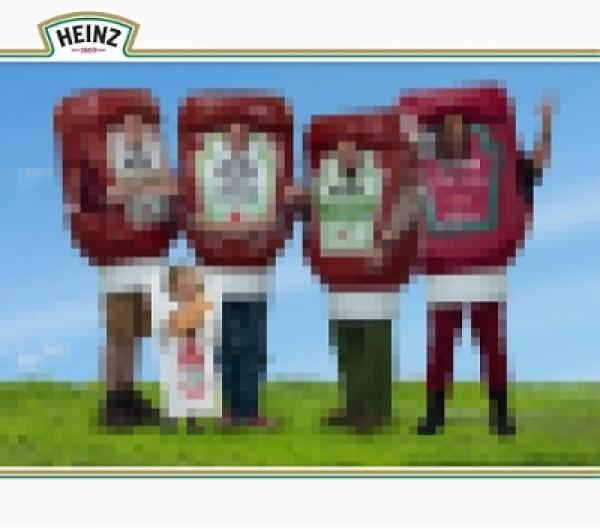
In addition, YouTube has just launched its AdBlitz campaign, one that enables advertisers to stream its Super Bowl ads days before the big game. The site has been a big draw over the past seven years, and should see big attention from a number of advertisers once more, just in time for the “big game”.
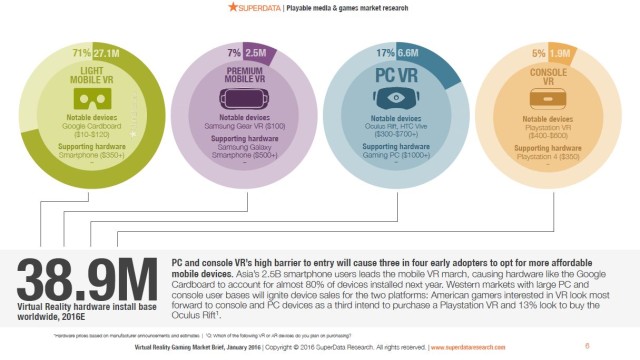

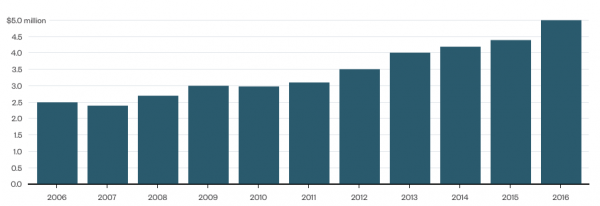 That said,
That said, 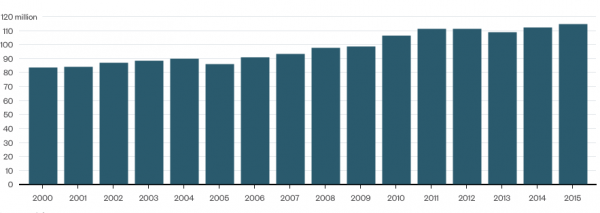 With CBS also airing the game digitally, an even bigger audience is expected, and we could be seeing an interesting trend for the Super Bowl over the next couple of years as spending on digital advertising eclipses regular advertising. The “big game” interest is still going to be there, but there could be a bigger interest in how many people are watching online compared to just TV.
With CBS also airing the game digitally, an even bigger audience is expected, and we could be seeing an interesting trend for the Super Bowl over the next couple of years as spending on digital advertising eclipses regular advertising. The “big game” interest is still going to be there, but there could be a bigger interest in how many people are watching online compared to just TV.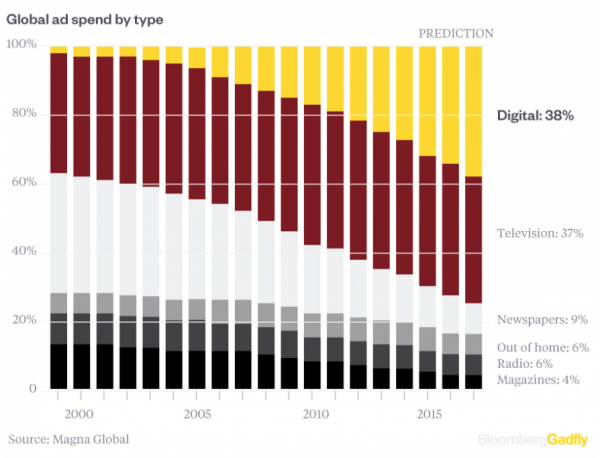 Cost could play a part in this advertising game as well, as the below chart indicates just how much is paid per viewer in terms of thousand impressions. Network TV still leads significantly over in-stream video, although, again, this could possibly change.
Cost could play a part in this advertising game as well, as the below chart indicates just how much is paid per viewer in terms of thousand impressions. Network TV still leads significantly over in-stream video, although, again, this could possibly change.